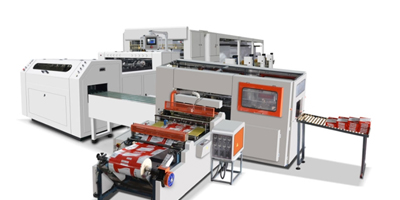When it comes to paper sizes, the ISO 216 standard has long been the global benchmark, with A3 and A4 being two of the most widely used formats, their differences in dimensions, applications, and even production processes make them suited for distinct purposes. Understanding these distinctions can help individuals and businesses choose the right paper for their needs, optimizing both functionality and efficiency.

A4: the gold standard for daily office work
A4 paper measures 210×297 mm and is the default choice for most documents, contracts, resumes, and printed materials. It is designed based on the √2 aspect ratio (1:1.4142) in the ISO 216 standard, which allows the paper to maintain the same proportions after being folded in half.
A3: twice the size of A4, with expanded functions
A3 paper measures 297×420 mm, twice the area of A4. This design not only continues the √2 ratio, but also makes it an ideal choice for application scenarios that require more visual space.
Key differences: A3 breaks the limitations of A4 by "doubling the area", but it also means higher paper costs and storage requirements.
Dominance of A4
Daily office: standardized documents such as contracts, reports, letters, etc.
Educational use: test papers, homework papers, portable notes.
Home printing: photos (6-inch or A4 size), household bills.
The unique value of A3
Design and creativity: artists draw sketches, designers layout samples.
Business presentations: meeting flowcharts, product prototypes.
Special needs: large-format tables, puzzles or model templates.
Why is the choice important?
Using A3 to print A4 content will cause a waste of resources; conversely, forcibly compressing A3 content onto A4 may cause blurred information or chaotic layout.
Production cost difference
A3 paper premium: A3 paper is usually 20%-50% higher than A4 because it requires a larger raw material area and takes up more space during cutting, packaging and transportation.
Production line adjustment: A3 and A4 are usually produced by the same paper machine, but the slitting equipment needs to adjust the blade distance according to the size. When producing A3, the machine needs to handle wider paper rolls, while A4 is efficiently mass-produced by longitudinal slitting.
Compatibility of printing equipment
A4 printer: compact structure, low cost, but cannot support A3.A3 printer: larger and more expensive, but compatible with A4.Production line impact: A3 printers have a more complex mechanical structure, resulting in higher maintenance costs and energy consumption than A4 devices.
A3/A4 producing line machines are specialized equipment designed to manufacture both paper sizes efficiently, incorporating adjustable cutting, printing, and handling systems to accommodate their distinct dimensions and meet varied market demands for office, creative, and commercial applications.
Resource consumption: The wood, water and energy required to produce an A3 sheet of paper are about twice that of A4.
Recycling challenges: Large-sized waste paper requires special treatment in the recycling process, and improper classification may reduce recycling efficiency.
A3 and A4 paper may seem like variations of the same tool, but their differences in size, application, and production make them uniquely suited to specific tasks.

GET A QUOTE